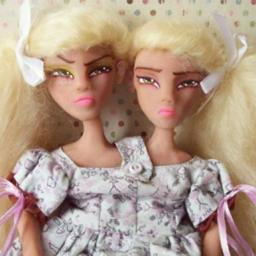
Dicephalic parapagus twins, or a single body with two heads, were
born in India on March 12th. India.com reports
"the twins have a slim chance of survival even after they are operated upon" and the parents have yet to name their conjoined daughters. [It] may not be possible to separate the twins because they share the same body. "The baby girl has two heads, two necks and two spines, but only one body, one lung for each head, two separate oesophaguses and trachea, a single stomach and heart. Most of the vital organs are shared," said Dr Amit Gupta, medical director of Sonepat's Cygnus JK Hindu Hospital, where the conjoined twins were born.
The parents are poor and did not have an ultrasound until the last trimester.
"It was on February 24 that the patient came to meet me and was into her 8th month of pregnancy. The mother had not gone through any tests earlier as she couldn't afford an ultrasound test. And it was then we broke the news to the family that there are conjoined twins to be born, and that their babies hadn't completely separated" gynaecologist Dr Shikha Malik said.
While having a single set of organs for conjoined twins does put more strain on the body, there are examples of thriving dicephalic parapagus twins, such as
Abby and Brittany Hensel. The pair, now age 24, had a reality show on US TV channel TLC in 2012.
 Dicephalic parapagus twins, or a single body with two heads, were born in India on March 12th. India.com reports "the twins have a slim chance of survival even after they are operated upon" and the parents have yet to name their conjoined daughters.
Dicephalic parapagus twins, or a single body with two heads, were born in India on March 12th. India.com reports "the twins have a slim chance of survival even after they are operated upon" and the parents have yet to name their conjoined daughters.
Analytical side, I wonder whether we could learn a lot about mind-body connections with such a scenario. Do they share the same responses to external stimuli, to placebos, and so on?